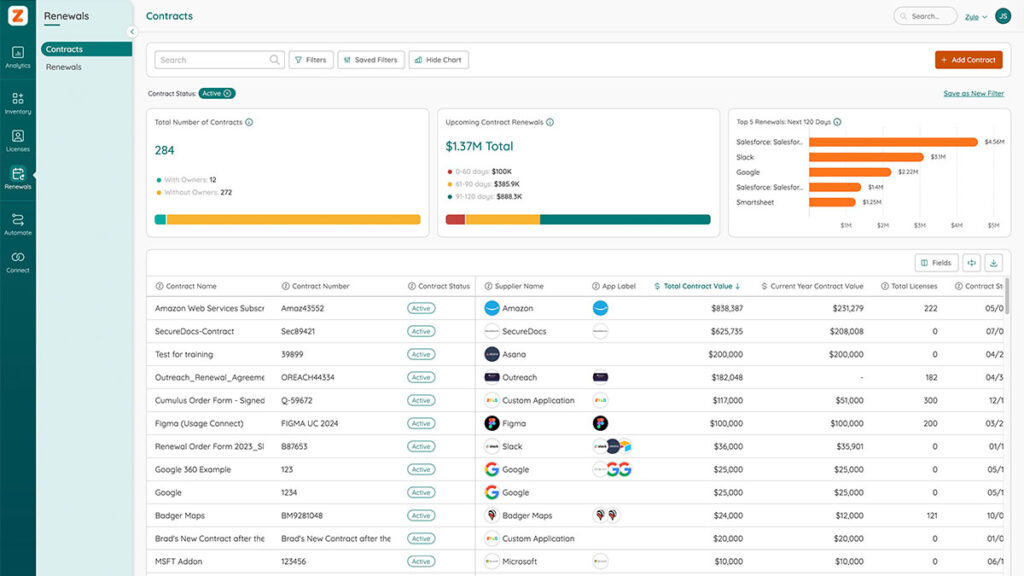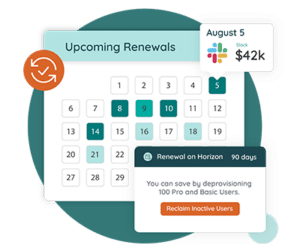
Zoom License Cost 2026: Which Plan Offers the Best Value for Your…
Table of Contents ToggleBest Practice #1: Bring SaaS Agreement & Contract...
Back
Back
Search for Keywords...
Blog

Table of Contents
Adopting best practices for SaaS contracts – including negotiating, maintaining, and managing contracts for SaaS applications – presents technology leaders with a challenge and an opportunity.
The challenge lies in the task of discovering and identifying contracts, gleaning key details to empower SaaS management, and documenting these details.
The opportunity in managing SaaS contracts draws from the challenge: Once these details are stored in a SaaS management platform or other record-keeping systems, they empower a holistic view of cloud-based software. This view, in turn, enables new software management capabilities, avenues for cost containment, and leverage for improved return on investment in SaaS.
Identifying all current SaaS applications in use and their respective contracts represents the fundamental first step toward optimizing the management of SaaS contracts.
Why is it important? You can’t manage (or optimize) contract details without establishing visibility first. At Zylo, we find that clients typically underestimate the number of SaaS applications within their environment by nearly two times. An enterprise business maintains about 660 SaaS applications on average. This means about 300 applications typically remain undiscovered.

When undiscovered, every application carries a potentially binding contract or user agreement that sets forth conditions such as terms of use, start and end dates, license quantity, data handling conditions, and renewal details. Without a transparent accounting of each application’s contract content, it’s nearly impossible to begin optimizing contract details for maximum value.
Tracking applications, procurement records, CASBs, or manual tracking via financial reconciliation can all reveal SaaS applications in use, which creates the ability to begin tracking down contract details. A SaaS discovery and management platform, such as Zylo, establishes the ability to discover, identify, and document contract details for each application.
This ability creates cross-functional collaboration to prioritize key and growing applications in the business. This allows for procurement to optimize pricing, security to properly vet the risk, and legal negotiate the terms that are best for the company.
About one in fifteen (6.6%) employees expense SaaS applications for business use in any given organization. And these purchases (typically accounted for through expense reimbursement requests), create nearly half of all SaaS applications in enterprise IT environments.
 The difference between an agreement for an employee-purchased application and a negotiated, vetted contract underscores the importance of reviewing and surfacing all SaaS application agreement details.
The difference between an agreement for an employee-purchased application and a negotiated, vetted contract underscores the importance of reviewing and surfacing all SaaS application agreement details.
When it comes to contract optimization, an employee-acquired application is not only more likely to exist as shadow IT (an application that’s unknown to IT), it’s also more likely to rely on a click-through license agreement. While a click-through is not necessarily problematic in and of itself, it doesn’t offer the protections as a negotiated enterprise contract for the same application.
Here are a few reasons why enterprise contracts can provide additional value:
Once all SaaS applications in use have been made visible using a discovery process, documenting each application’s contract or agreement details in an easily accessible system of record is the next logical step.
For many organizations, this system of record may exist as a manual spreadsheet, a contract management system, or some other form of digital document storage and retrieval system.
According to Business Law Today, approximately 95% of all businesses manage contracts manually. Advantages of using a system of record to store contract details include the ability to search by vendor name or application type, the ability to quickly locate pertinent information without the need to rescanning or rereading whole contracts, and the ability to compare contract details from multiple contracts.
What content is most important when documenting and storing SaaS application contract details? Follow this checklist when reviewing your SaaS contracts:
The Ultimate Guide for Wildly Effective SaaS Renewals
Learn MoreFor its customers, Zylo offers contract content metadata scraping, line-item data selection, and record-keeping for every SaaS application agreement or contract. A technology manager can send any cloud software or SaaS contract for metadata scraping.
Once received, Zylo’s contract review system automatically finds all contract details (including every item listed in the contract review checklist, if present), then loads the information into the application’s profile in the Zylo SaaS management platform. This level of granularity allows organizations to progress towards more accurate utilization by specific license types, cost-per employee metrics, and build a robust product catalog.

With all contract details now centrally located, technology managers can collaborate with business units and application owners to leverage fully revealed contract details for value improvements.
For example, multiple single employee-owned instances of a SaaS application could be consolidated into an enterprise agreement (with bolstered benefits from a negotiated contract). This view also enables an end-to-end view of every application from its starting point in contract details to the actual real-world usage metrics created by end-users.
 Another enablement created by centrally stored details is a calendar for contract renewal dates and notification periods. Within Zylo’s SaaS management platform, every renewal data and notification period can be added to a renewal calendar with alerts to prevent unintended automatic renewals.
Another enablement created by centrally stored details is a calendar for contract renewal dates and notification periods. Within Zylo’s SaaS management platform, every renewal data and notification period can be added to a renewal calendar with alerts to prevent unintended automatic renewals.
Effectively managing SaaS contracts and agreements – and the terms they denote – is a cornerstone to any SaaS management strategy. With clear visibility into SaaS applications and their related contract details, technology managers can create opportunities for improved value and increased productivity.
For more insights on how to tackle and win at your renewals, visit our SaaS Renewal Management Resource Center.

Table of Contents ToggleBest Practice #1: Bring SaaS Agreement & Contract...

Table of Contents ToggleBest Practice #1: Bring SaaS Agreement & Contract...

Table of Contents ToggleKey Themes That Shaped SaaS Management in 20251....

Table of Contents ToggleBest Practice #1: Bring SaaS Agreement & Contract...
| Cookie | Duration | Description |
|---|---|---|
| cookielawinfo-checkbox-analytics | 11 months | This cookie is set by GDPR Cookie Consent plugin. The cookie is used to store the user consent for the cookies in the category "Analytics". |
| cookielawinfo-checkbox-functional | 11 months | The cookie is set by GDPR cookie consent to record the user consent for the cookies in the category "Functional". |
| cookielawinfo-checkbox-necessary | 11 months | This cookie is set by GDPR Cookie Consent plugin. The cookies is used to store the user consent for the cookies in the category "Necessary". |
| cookielawinfo-checkbox-others | 11 months | This cookie is set by GDPR Cookie Consent plugin. The cookie is used to store the user consent for the cookies in the category "Other. |
| cookielawinfo-checkbox-performance | 11 months | This cookie is set by GDPR Cookie Consent plugin. The cookie is used to store the user consent for the cookies in the category "Performance". |
| viewed_cookie_policy | 11 months | The cookie is set by the GDPR Cookie Consent plugin and is used to store whether or not user has consented to the use of cookies. It does not store any personal data. |
